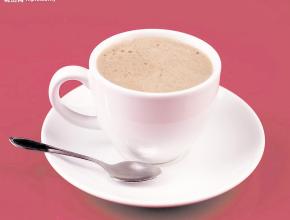Flavor characteristics of Burundian coffee with spicy aftertaste introduction to Burundian Coffee Manor
Espresso is a type of coffee that has a strong taste and is brewed by boiling extremely hot water under high pressure over ground coffee powder. It was invented and developed in Italy in the early 20th century, but until the mid-1940s it was a drink made solely through steam pressure.
At the same time, Espresso is not wrong to be considered the soul of coffee. Most of the fancy coffee we know is made by mixing milk and other materials with Espresso as the base.
When we know coffee for a long time, we will think that Espresso exists as a type of coffee. Since there is a comprehensive and rich taste, can coffee lovers match it as their favorite taste?
I think it's OK. There are two ways to spell and mature through the way of matching performance. We don't discuss the pros and cons, we only study their performance.
Raw spelling requires a very thorough understanding of coffee beans, and requires an understanding of coffee roasting. Is the different combination of coffee beans 1+1 greater than 2?
1+1+1 combinations require different combinations to combine each other to reduce or blend each other's characteristics, which is the purpose of the existence of raw, roasted coffee will be very stable, there will be considerable stability to the Espresso product.
Cooked spell, I think this method can better fit the actual situation, ensure that every day coffee production has different characteristics, want what kind of taste, can be combined like grasping traditional Chinese medicine, at the same time this is also a coffee shop in each time period, enrich Espresso product line a way of operation. Burundi coffee has been in a state of chaos for a long time, with a large number of old and new green beans mixed together, making this coffee unsuitable for grading. The coffee is coarse but mild and has characteristics similar to Kenya coffee. Sweet, fruity flavor with a spicy finish.
Dry aroma (1-5): N/A
Wet Aroma (1-5): N/A
Acidity (brightness)(1-10): N/A
Taste (layering)(1-10): N/A
Taste (body)(1-5): N/A
Aftertaste (Residue)(1-10): N/A
Balance (1-5): N/A
Base Score (50): N/A
Total score (max. 100): N/A
Intensity/Main Attributes: Medium to strong/sweet, fruity, spicy finish.
Recommended baking level: full city
Comparison: Very similar to Kenyan coffee Lundy coffee bears striking similarities to neighboring Rwanda, whose coffees are often confused. Burundi's coffee cultivation is dominated by bourbon, processed coffee cherries using traditional wet processing, and its fine coffee is characterized by elegant sweetness and bright citrus aromas.
Burundi is a small landlocked country located at the junction of eastern and central Africa, straddling the Nile River and Congo River basins. Its topography is dominated by hills and mountains, and it has excellent coffee cultivation altitude. Coffee cultivation in Burundi has a short history. Its coffee cultivation is carried out entirely in the form of small family farms, with great differences in quality. Moreover, perennial war and social unrest also make its coffee cultivation very chaotic. But I have to admit that there is a potential for producing high quality coffee here.

Important Notice :
前街咖啡 FrontStreet Coffee has moved to new addredd:
FrontStreet Coffee Address: 315,Donghua East Road,GuangZhou
Tel:020 38364473
- Prev

Introduction of pure Puerto Rican coffee-flavored manors
Puerto Rico's coffee beans are carefully planted, pure, aromatic and heavy, of which the best coffee is Yauco Selecto, which means Selecto. Yaocote Coffee is grown only on three farms in the southwest of the island, San Pedro, Caracolillo and La Juanita. It is a truly high-quality coffee with a strong flavor and a long aftertaste. Puerto Rico
- Next

Ugandan Coffee Flavor Ugandan Coffee Taste introduction to Ugandan coffee producing areas
Uganda's coffee production ranks first in Africa, accounting for more than 70% of its total exports. Uganda is also the hometown and main producing area of Robes specialty coffee. In the 1960s, Ugandan coffee production remained at 3.5 million bags a year. By the mid-1980s, coffee production had dropped to 2.5 million bags a year, mainly for political reasons. But now coffee production is on the rise again, which is large at present.
Related
- Detailed explanation of Jadeite planting Land in Panamanian Jadeite Manor introduction to the grading system of Jadeite competitive bidding, Red bid, Green bid and Rose Summer
- Story of Coffee planting in Brenka region of Costa Rica Stonehenge Manor anaerobic heavy honey treatment of flavor mouth
- What's on the barrel of Blue Mountain Coffee beans?
- Can American coffee also pull flowers? How to use hot American style to pull out a good-looking pattern?
- Can you make a cold extract with coffee beans? What is the right proportion for cold-extracted coffee formula?
- Indonesian PWN Gold Mandrine Coffee Origin Features Flavor How to Chong? Mandolin coffee is American.
- A brief introduction to the flavor characteristics of Brazilian yellow bourbon coffee beans
- What is the effect of different water quality on the flavor of cold-extracted coffee? What kind of water is best for brewing coffee?
- Why do you think of Rose Summer whenever you mention Panamanian coffee?
- Introduction to the characteristics of authentic blue mountain coffee bean producing areas? What is the CIB Coffee Authority in Jamaica?

